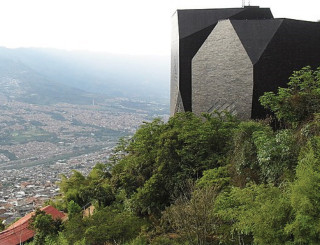
The transformation of Medellín in Colombia is well known to urbanists. A highly contested, violent and unequal city in the 1980s and 1990s, Medellín’s Social Urbanism ushered in a series of ambitious reforms that reimagined public space and mobility. These were designed to address challenges related to violence and inequality, concerns which are present both in Medellín and across the Latin American region. In examining the relationship between architecture, politics and peacebuilding, we consider how the role of architecture was and is conceptualised in the city’s socio-political transformation and how the changing form and use of the urban built environment contributed to shaping conditions for peace to emerge. Drawing on qualitative interviews with key stakeholders, we show that while the challenges of violence remain, the architectural and the political became intrinsically entwined to both build peace in the city and forward a new image of Medellín both internally and externally.
Image: Biblioteca España in the urban district (comuna) of Santo Domingo. Architects: El Equipo Mazzanti. Year: 2007. Photo: https://commons.wikimedia.org/wiki/File:Parque_Biblioteca_Espa%C3%B1a.JPG.

